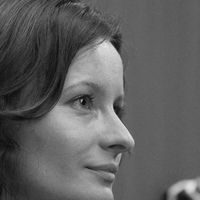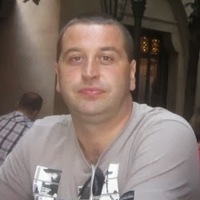Kóczán A.I.-Marsai V.-Pócza I.-Vargha M. (Szerk.): DT 60. Tanulmányok Dezső Tamás hatvanadik születésnapja alkalmából, Virtuóz Kiadó és Nyomdaipari Kft, Budapest, 78-94., 2023
Öcsöd-Kováshalom korábbi ásatásain sok olyan antropomorf plasztika látott napvilágot, amelyek lát... more Öcsöd-Kováshalom korábbi ásatásain sok olyan antropomorf plasztika látott napvilágot, amelyek látványos példákkal illusztrálták az egykor itt élt közösség, közösségek mindennapi tevékenységek körén túlmutató különleges cselekmények emlékeit. Klincsik János tanártól 2023-ban a lelőhelyről származó agyag figura töredékét kaptuk meg. Az agyag szobrocska egy emberi felsőtest mellrészét ábrázolja, amelyről a fej és a karok letörtek. Ami a plasztikát igazán izgalmassá teszi, az a jobb mellrészén látható hengeres bemélyedés. Nyilvánvaló, hogy ez egy vállon nyugvó egykori nyél nyoma. Az új öcsödi szobrocska e viseleti sajátossága felidézi a szintén késő neolitikus Szegvár-Tűzköves lelőhelyen 1989-ben előkerült figurát, amely egy zsámolyon ülő férfi alakot ábrázolt a vállán nyugvó kis nyeles anyagbaltával. Az akkori interpretációt illetően sokat elárult az ismertető tanulmány címe "Der Gott mit Axt'.








Uploads
Papers by Pál Raczky
néhány örök érvényűnek gondolt tézisről kiderül, hogy pusztán tévedés, félreértelmezés. A híres alföldi, az
5. évezred első felére keltezett késő újkőkori tell-településekkel sok esetben szintén ez történik. Az utóbbi
években a múlt századi ásatási adatok mellett mind roncsolásmentes vizsgálatok, mind pedig új feltárások
eredményeinek összehasonlításából származnak teljesen új értelmezést lehetővé tevő eredmények. Az új
meglátásokra elsősorban a multidiszciplináris kutatás, az adatok összességének közös értelmezése nyújtja
a legjobb lehetőséget. Az ilyen, minden rendelkezésre álló adatsor egybevetéséből származó közös értékelés
adhat jó alapot arra, hogy az eredmények alkalmassá váljanak a szélesebb összefüggésbe helyezett értelmezésre, és esetleg történeti, az egykori társadalmi változásokkal kapcsolatos következtetések levonására.
A szerzők e tanulmányának, amely a délkelet-magyarországi Tisza-vidéken található Gorzsa tell-település
régről ismert és teljesen új adatainak együttes értékelését teszi közzé, éppen ez szándéka.
distributions of milk exploitation across Europe over the past 9,000 years using around 7,000 pottery fat residues from more than 550 archaeological sites. European milk use was widespread from the Neolithic period onwards but varied spatially and temporally in intensity. Notably, LP selection varying with levels of prehistoric milk exploitation is no better at explaining LP allele frequency trajectories than uniform
selection since the Neolithic period. In the UK Biobank4,5 cohort of 500,000 contemporary Europeans, the LP genotype was only weakly associated with milk consumption and did not show consistent associations with improved fitness or health indicators. This suggests that other reasons for the beneficial effects of LP should be considered for its rapid frequency increase. We propose that lactase non-persistent individuals consumed milk when it became available but, under conditions of famine and/or increased pathogen exposure, this was disadvantageous, driving LP selection in prehistoric Europe. Comparison of model likelihoods indicates that population fluctuations, settlement density and wild animal exploitation—proxies for these drivers—provide better explanations of LP selection than the extent of milk exploitation. These findings offer new perspectives on prehistoric milk exploitation and LP evolution.
von Eszter Bánffy, Knut Rassmann, András Füzesi und Pál Raczky
Öcsöd-Kováshalom, Ungarn Forschungen zu Tell-Siedlungen und ihre
Umgebung in Ostungarn Die Arbeiten der Jahre 2018 bis 2021
excavations will be compared with the results of earlier excavations, opening new avenues for so that a better understanding of the social structure and networks within the late Neolithic Carpathian basin.
bemutatni, hogy az emberi arccal, vagy éppen az arc elfedésével
kapcsolatos közösségi attitűdök már az újkőkor
időszakában kultúráról kultúrára új megjelenésformákat
és új gondolati kereteket körvonalaztak az általános vonások
mellett a Közel-Kelettől egészen a Kárpát-medencéig
terjedő nagy területen. Ebből következően magyarázatuk
is csak az adott kulturális értelmezési tartományok
keretei között oldható meg a tudományos módszertan
követelményei szerint. Ez a szemléleti perspektíva érvényes
a későbbi korok, így az írott források által (is) kísért
időszakok történeti környezetére, a néprajzi megfigyelések
gazdag analógiáira is. A téma mindezeken túl felveti
a személyiség, az éntudat, az identitás, az ajándék és
a maszkok messzire vezető komplex összefüggéseit, amire
több remek ízelítőt kaphatunk többek között Claude Lévi-
Strauss vagy Marcel Mauss sokszor hivatkozott klasszikus
antropológiai munkáiból is.
of the Great Hungarian Plain in Hungary. The eastern part of House 4 yielded three stylised bucranium figurines
which were originally attached to a four-legged table-like stand. A similar figurine came to light in
1977 at Szajol-Felsőföld, lying a few kilometres from this site. This figurine is highly fragmented and only its
upper part remained.
The practice of domestication and animal husbandry are important topics in the Early Neolithic of the
Carpathian Basin. However, the technology of cattle representations and the social role of cattle have not
been analysed systematically in Hungary. Two of the figurines from Szolnok were not completely reconstructed,
revealing that they were created in multiple phases.
In order to better understand the construction of the figurines, computed tomography (CT), microscopic
fabric analysis, geochemical analyses (ICP-OES/MS and XRD), and phytolith analysis were undertaken. The
various techniques employed in the analysis of the figurines yielded a wealth of information that opens new
avenues of interpretation concerning how these objects were made and how they may have been utilised.
The results indicate that the figurines from Szolnok were created during two distinct manufacturing
episodes, and that the figurines were fired after the first manufacturing episode, implying that they were
utilised, which was followed by another building episode and firing. The application of interdisciplinary
methods highlights the complexity of these figurines and the operation of symbolic systems represented by
these objects in the Early Neolithic of Hungary.
néhány örök érvényűnek gondolt tézisről kiderül, hogy pusztán tévedés, félreértelmezés. A híres alföldi, az
5. évezred első felére keltezett késő újkőkori tell-településekkel sok esetben szintén ez történik. Az utóbbi
években a múlt századi ásatási adatok mellett mind roncsolásmentes vizsgálatok, mind pedig új feltárások
eredményeinek összehasonlításából származnak teljesen új értelmezést lehetővé tevő eredmények. Az új
meglátásokra elsősorban a multidiszciplináris kutatás, az adatok összességének közös értelmezése nyújtja
a legjobb lehetőséget. Az ilyen, minden rendelkezésre álló adatsor egybevetéséből származó közös értékelés
adhat jó alapot arra, hogy az eredmények alkalmassá váljanak a szélesebb összefüggésbe helyezett értelmezésre, és esetleg történeti, az egykori társadalmi változásokkal kapcsolatos következtetések levonására.
A szerzők e tanulmányának, amely a délkelet-magyarországi Tisza-vidéken található Gorzsa tell-település
régről ismert és teljesen új adatainak együttes értékelését teszi közzé, éppen ez szándéka.
distributions of milk exploitation across Europe over the past 9,000 years using around 7,000 pottery fat residues from more than 550 archaeological sites. European milk use was widespread from the Neolithic period onwards but varied spatially and temporally in intensity. Notably, LP selection varying with levels of prehistoric milk exploitation is no better at explaining LP allele frequency trajectories than uniform
selection since the Neolithic period. In the UK Biobank4,5 cohort of 500,000 contemporary Europeans, the LP genotype was only weakly associated with milk consumption and did not show consistent associations with improved fitness or health indicators. This suggests that other reasons for the beneficial effects of LP should be considered for its rapid frequency increase. We propose that lactase non-persistent individuals consumed milk when it became available but, under conditions of famine and/or increased pathogen exposure, this was disadvantageous, driving LP selection in prehistoric Europe. Comparison of model likelihoods indicates that population fluctuations, settlement density and wild animal exploitation—proxies for these drivers—provide better explanations of LP selection than the extent of milk exploitation. These findings offer new perspectives on prehistoric milk exploitation and LP evolution.
von Eszter Bánffy, Knut Rassmann, András Füzesi und Pál Raczky
Öcsöd-Kováshalom, Ungarn Forschungen zu Tell-Siedlungen und ihre
Umgebung in Ostungarn Die Arbeiten der Jahre 2018 bis 2021
excavations will be compared with the results of earlier excavations, opening new avenues for so that a better understanding of the social structure and networks within the late Neolithic Carpathian basin.
bemutatni, hogy az emberi arccal, vagy éppen az arc elfedésével
kapcsolatos közösségi attitűdök már az újkőkor
időszakában kultúráról kultúrára új megjelenésformákat
és új gondolati kereteket körvonalaztak az általános vonások
mellett a Közel-Kelettől egészen a Kárpát-medencéig
terjedő nagy területen. Ebből következően magyarázatuk
is csak az adott kulturális értelmezési tartományok
keretei között oldható meg a tudományos módszertan
követelményei szerint. Ez a szemléleti perspektíva érvényes
a későbbi korok, így az írott források által (is) kísért
időszakok történeti környezetére, a néprajzi megfigyelések
gazdag analógiáira is. A téma mindezeken túl felveti
a személyiség, az éntudat, az identitás, az ajándék és
a maszkok messzire vezető komplex összefüggéseit, amire
több remek ízelítőt kaphatunk többek között Claude Lévi-
Strauss vagy Marcel Mauss sokszor hivatkozott klasszikus
antropológiai munkáiból is.
of the Great Hungarian Plain in Hungary. The eastern part of House 4 yielded three stylised bucranium figurines
which were originally attached to a four-legged table-like stand. A similar figurine came to light in
1977 at Szajol-Felsőföld, lying a few kilometres from this site. This figurine is highly fragmented and only its
upper part remained.
The practice of domestication and animal husbandry are important topics in the Early Neolithic of the
Carpathian Basin. However, the technology of cattle representations and the social role of cattle have not
been analysed systematically in Hungary. Two of the figurines from Szolnok were not completely reconstructed,
revealing that they were created in multiple phases.
In order to better understand the construction of the figurines, computed tomography (CT), microscopic
fabric analysis, geochemical analyses (ICP-OES/MS and XRD), and phytolith analysis were undertaken. The
various techniques employed in the analysis of the figurines yielded a wealth of information that opens new
avenues of interpretation concerning how these objects were made and how they may have been utilised.
The results indicate that the figurines from Szolnok were created during two distinct manufacturing
episodes, and that the figurines were fired after the first manufacturing episode, implying that they were
utilised, which was followed by another building episode and firing. The application of interdisciplinary
methods highlights the complexity of these figurines and the operation of symbolic systems represented by
these objects in the Early Neolithic of Hungary.
őskorkutatás óriási nyeresége, és a háttérmunkálatok az Institut für Orientalische und
Europäische Archäologie (Bécs), valamint az Eurasien-Abteilung des Deutsches Archäologisches
Instituts (Berlin) sikeres tudományos együttműködését dicséri. A könyv alapvetően a nyugat-
bulgáriai Sztruma-völgyben található Gălăbnik települési halmának, telljének feltárási
eredményeit foglalja össze, igen gazdag illusztrációval kísérve. Az 1978–1979-es első próbaásatásokat
Michail Čhoadžiev kezdeményezte, s ezt 1980 és 1993 között további 13 ásatási
kampány követett, amelynek a kivitelezése már főként Juraj Pavúk és Aneta Bakamska nevéhez
kötődött. Noha a Sztruma/Sztrimon völgyében 1980 és 1990 időszakában számos hasonló
lelőhely kutatása valósult meg, többek között a görög–bolgár határon található Topolnica-
Promachon helyszínén, mégis ez a Gălăbnik-monográfia az első, amely a teljesség igényével
ad áttekintő képet egy ilyen, a Kr. e. 6. évezred elejének időszakára keltezhető, neolitikus település
rétegtani helyzetéről, objektumairól és emlékanyagáról.
were descended from Anatolian migrants who received a limited amount of
admixture from resident hunter-gatherers. Many open questions remain, how-
ever, about the spatial and temporal dynamics of population interactions and
admixture during the Neolithic period. Using the highest-resolution genome-
wide ancient DNA data set assembled to date|a total of 177 samples, 127
newly reported here, from the Neolithic and Chalcolithic of Hungary (6000{
2900 BCE, n = 98), Germany (5500{3000 BCE, n = 42), and Spain (5500{
2200 BCE, n = 37)|we investigate the population dynamics of Neolithization
across Europe.
the Uivar site was led by Florin Draşovean and Wolfram Schier, two highly experienced archaeologists,
who combined their wide-ranging knowledge
and expertise during the ten years of fieldwork
on the site and its assessment, the first results of which are now available in the extensive publication
reviewed here. The main methodological approach during the fieldwork, employed consistently
in all investigated areas from 1999, was the rigorous application of the stratigraphic method to
excavate the site according to layer interfaces and one-time cut features.